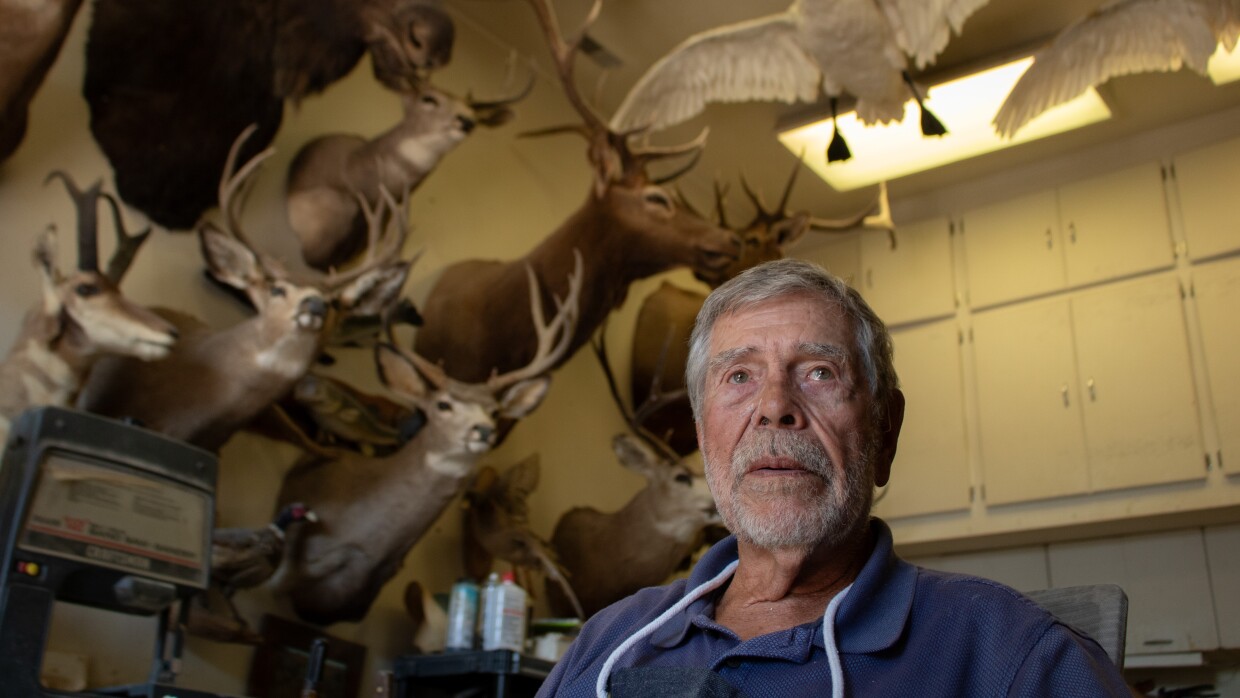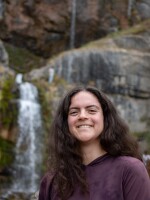Bob Luzitano still has the first animal he ever taxidermied. It’s a squirrel he hunted with his stepdad as a teenager. He used marbles for the eyes and put a coat hanger in the tail, and it “ended up looking pretty good,” he said.
Retired from the Air Force and decades as an engineer at Northrop Grumman in Utah, Luzitano embraced taxidermy as his third career.
“It's an art form, and I've always had an interest in art,” he said.

Nestled in a home on a cul-de-sac in a hilly Layton neighborhood, his studio looks like a one-car garage, complete with the big door. He built it just for taxidermy, decades before it became his main gig.
Two dozen heads of deer, moose, antelope and elk line the walls. There are geese and swans on the ceiling and ducks near the closet door. A box fan blows over the table, and the space smells like sawdust and paint. There’s a taxidermy magazine beneath a finished fish and a supply catalog stacked on a shelf. Luzitano’s hunting dog, a 10-year-old yellow Lab named Abby, sometimes wanders in looking for treats.
On this afternoon, Luzitano worked on a lake trout. In addition to preserving real animals, he creates replicas of fish customers have caught. He started by painting a white plastic fish dark gray. He would then scrape off the paint with steel wool, leaving dark lines in each scale, and fit a clear plastic tail to the body.
“The scales will pop out at you, so you can actually see scales,” he said.
Luzitano taught himself to paint, just like he taught himself to stuff and mount big game. He really got into taxidermy in the 1970s when he shot a deer and couldn’t afford to pay someone else to do it.
“So I went to the library and got books on how to mount a deer,” he said. “And I found out there's companies like this one that you can order forms and ear liners and eyes and all the things you need to make it look real.”
Luzitano still has that deer.
He loves swapping stories with customers who share his passion for hunting and fishing. And if he’s not entirely happy with his work, he’s learned to leave it be. He may be his own worst critic, but a recent customer was thrilled with how his fish turned out.
For Luzitano, taxidermy captures the moment when he met that animal in the wild. He pointed to the only elk he’s ever bow-hunted, on a weekend in Nine Mile Canyon.
“He's looking at me 40 yards away, and I just kind of moved real slowly and tucked in behind a tree where I could still see his rump, but not his head, and he couldn't see me.”
Then the elk stepped forward.
“In my mind's eye, I still see that arrow, just a little bit of loft to it, and wham, right, double lung, no doubt about it. He went about 85 yards and died.”
Luzitano loves that adrenaline rush and the battle of wits.
“You think, ‘I'm a human, I got, you know, I'm smarter than they are,’ but they're pretty bluff,” he said. “They're pretty tricky. They're pretty smart. So to out-trick one and finally get him on the ground, it's exhilarating.”

Hunting season is around the corner. It’s a busy time to be both a hunter and a taxidermist. Luzitano has some big plans to add to his collection.
“I turned 80 years old. I'm running out of time. All these elk are nice elk, but they're not trophy elk,” he said. “I want a trophy elk.”
He knows the day is coming when he won’t be able to hunt anymore. He struggles to climb the stairs in his house. When that day arrives, when his arthritis or neuropathy gets so bad he can’t walk, Luzitano plans to still be in his studio, surrounded by the animals he brought home.
Macy Lipkin is a Report for America corps member who reports for KUER in northern Utah.
_












